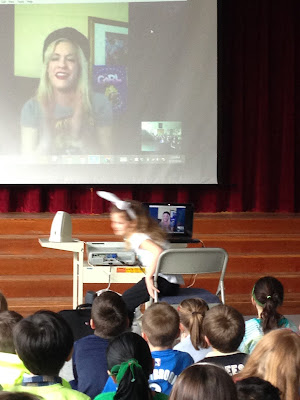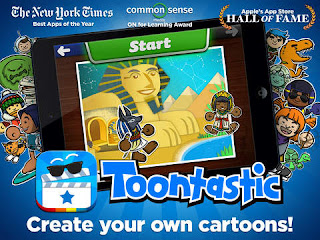The Museum of Science in-house field trip was amazing!
 The teacher from the museum brought three live animals for the students to observe. These animals live in different habitats in the wild. Through the use of a slide show and a camera, students were able to examine different features of each animal. One thing we looked at on each animal was its teeth. This helped us determine what type of food the animal eats. The students were made encouraged to use the terms herbivore, carnivore, and omnivore. Students observed other features that could help an animal get food, hide from enemies, and survive in its habitat. As students determined information about the animal, the teacher added it to this large chart. The final task was to determine which habitat the animal lived in. Students began by eliminating the habitats it definitely could NOT live in to narrow the choices.
The teacher from the museum brought three live animals for the students to observe. These animals live in different habitats in the wild. Through the use of a slide show and a camera, students were able to examine different features of each animal. One thing we looked at on each animal was its teeth. This helped us determine what type of food the animal eats. The students were made encouraged to use the terms herbivore, carnivore, and omnivore. Students observed other features that could help an animal get food, hide from enemies, and survive in its habitat. As students determined information about the animal, the teacher added it to this large chart. The final task was to determine which habitat the animal lived in. Students began by eliminating the habitats it definitely could NOT live in to narrow the choices.
One of the animals was a hedgehog. She was very shy and spent most of the time hiding in the shavings but the information provided in the slide helped us learn more about her.
The other animals were a tiger salamander and a prehensile tailed skink.
Below is a video about a barred tiger salamander.
Here is the chart the students helped to complete.
After the presentation (and a question/answer session) the students got to explore the animal skins and coverings at a touch table.
We also got a closer look at the skink!
Later that day, students had the opportunity to draw and write about the field trip. They were able to record what they learned about habitats and the animals we saw.
This is such a great experience. I look forward to this visit every year!
Stay tuned because The Museum of Science will be coming back again
to teach the second graders about Life Cycles!






























